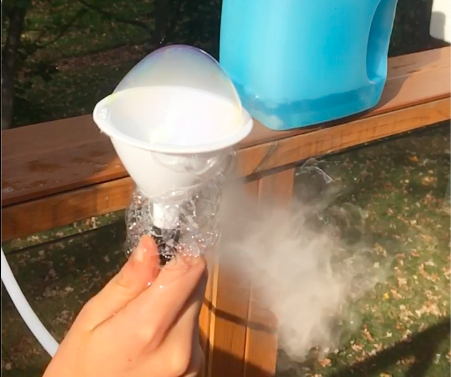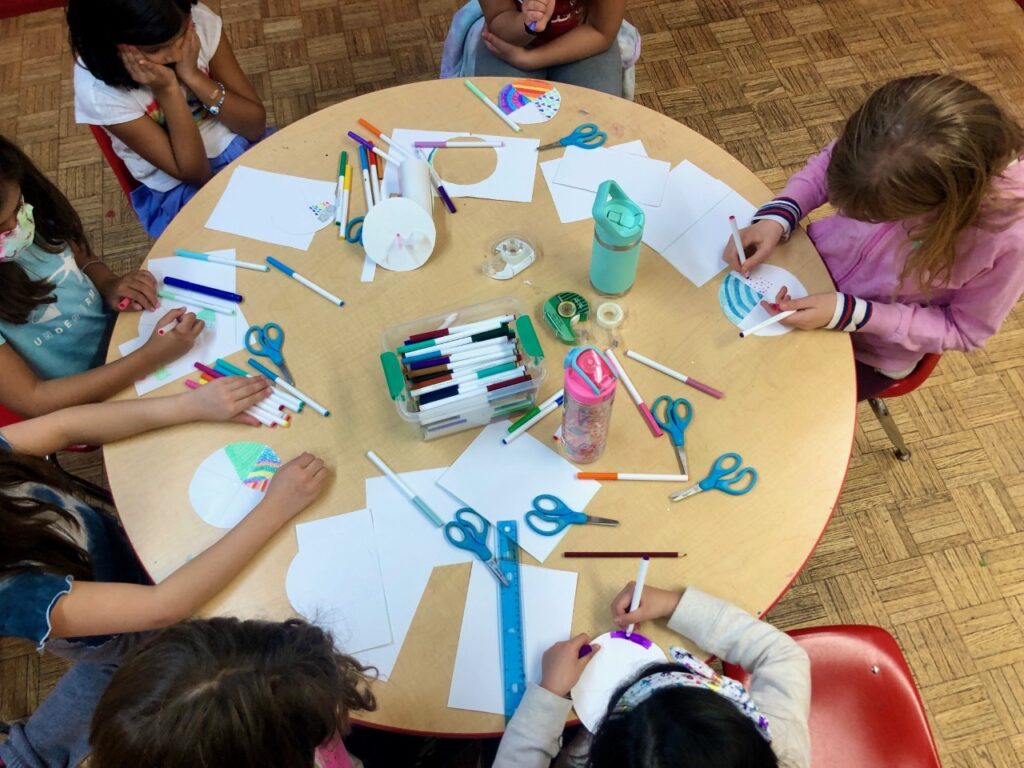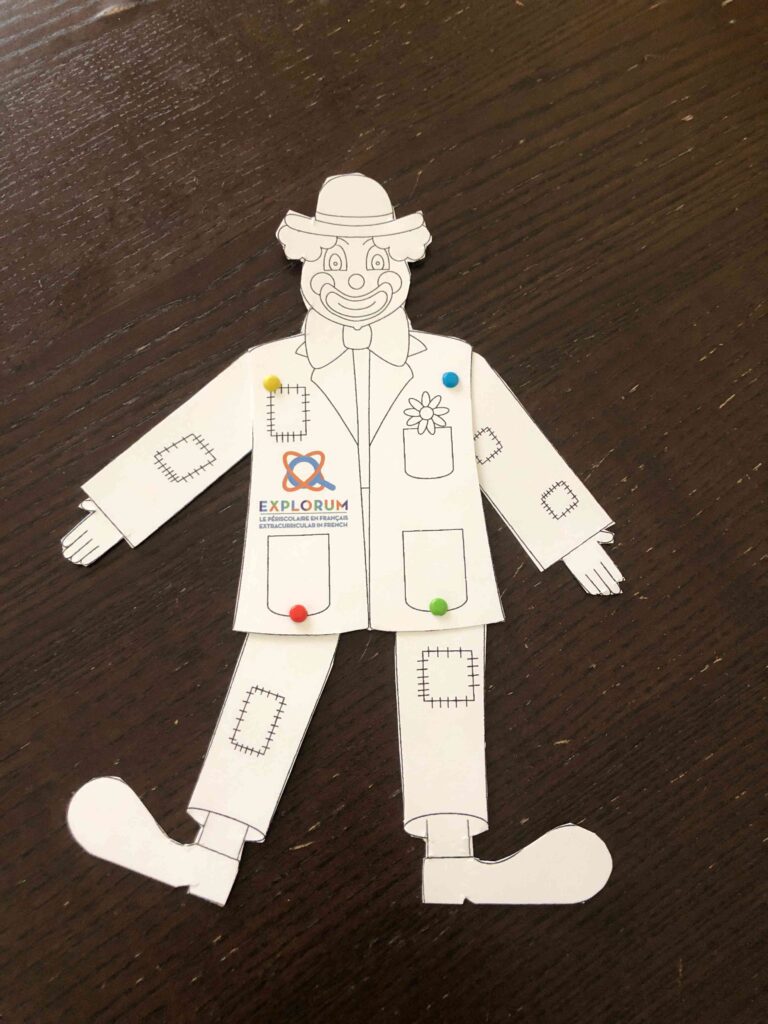

In the realm of dynamic art, where Science, Technology, Engineering, Art, and Mathematics (STEAM) intersect, the concept of artwork in motion has been extensively explored, notably by the renowned artist nicknamed “Agam”.
He pioneered an innovative approach where the artwork transforms based on the viewer’s position, thus creating an interactive visual experience. In our workshop, we harness this idea to craft our own dual artwork, presenting two distinct perspectives from two juxtaposed drawings.
Collage, tryearsparancy, superposition… so many techniques to produce art! Le’ts try 3 different techniques to produce one same art piece!
Collage, tryearsparancy, superposition… so many techniques to produce art! Le’ts try 3 different techniques to produce one same art piece!
Chemistry to make art? Physics to create modern patterns? This is what will do in this series of experiments that combine art, physics and chemistry!

Budding scientists will be passionate about chemistry in this workshop that combines arts and sciences! Young artists enthusiastically experiment with various products with unique chemical properties; colourful and amazing reactions come to life under their creative fingers, transforming the space into an artistic laboratory. Children discover the magical marriage of science and art while creating their personalized masterpieces. From colorful bubbles to spectacular effects, each experiment encourages curiosity, stimulates creativity, and provides a artistic perspective on the magic of chemical and physical reactions.
An art piece using string or yarn, what a great idea! Let’s create a star, an octagon or other shapes to decorate while learning about geometry and symmetry!

Let’s dive into a colourful world where geometry, symmetry, and art come together to create magical patterns with multi-coloured string! Using the magic of shapes and symmetries, we weave the string around a central point for dazzling creations. This hands-on adventure will push us to explore the secrets of shapes and patterns, while unleashing our creativity and discovering the connections between art and mathematics.
Paper is flat, so how do turn it into a decorative 3D ball? Using geometry, a bit of math and our artistic talents, we can make original decorations for a garland, a crown or put in a basket. Let’s be creative and make decorative 3D pieces of different shapes and sizes.

In this workshop, we explore the transformation of flat paper into three-dimensional decorations for crowns, necklaces, or baskets. The activity involves creating paper balls, ranging from Christmas ornaments to artistic embellishments. By unleashing creativity, participants produce balls of various shapes, sizes, and colors. This experience encourages the exploration of geometric concepts and material properties while stimulating artistic imagination. Participants thus develop their understanding of spatial dimensions and manual dexterity.
We all blew little soap bubbles ; some were bigger than others… But have you ever concocted your own bubble solution? Have you tried making square bubbles? Let’s try all this in this messy (but clean) experiment!

We’ve all blown small soap bubbles bought in stores; they’re all round. In this workshop, let’s concoct our own bubble liquid mixture and explore the properties of different wands to see if we can create bubbles of different shapes. By experimenting with liquid proportions and various materials, let’s discover the principles of surface tension and bubble geometry. Can we make bubbles of different sizes? Shapes? Or even more durable bubbles? This playful activity promotes hands-on learning of scientific concepts while encouraging creativity and curiosity.
How do we combine electronics and creativity? We make a light-up card using electric circuits.

Let’s create an electronic circuit using a copper tape and explore the properties of open and closed circuits. Through hands-on experimentation, we will learn about the flow of electricity and the components of a circuit and gain insight into circuitry principles and electrical conductivity. This interactive experience fosters creativity, problem-solving skills, and an understanding of the intersection between art, technology, engineering, and mathematics.
Take an image, two artistic techniques, a bit of luminosity and transparancy, and voila… two unique art pieces! Light plays tricks on us!

Let’s explore two fascinating art techniques: collage and stained glass. Let’s discover how these methods use light and transparency differently. With collage, let’s play with contrasts and textures to create unique compositions. On the other hand, stained glass will allow us to experiment with light refraction and color interplay through pieces of colored paper. It’s an artistic exploration that combines creativity and optical concepts.
What a nice bowl! Let’s make our own useful art piece to store our keys, coins, or anything else you can think of…! A decorative bowl we do ourselves, what is prettier? Depending on the materials we use and the shape we mold, our bowl will have various uses… let’s explore, create and mostly, let’s have fun!

Create your own decorative bowl with our STEAM workshop! Using just string and glue, discover how to shape a unique bowl according to your preferences. Explore different shapes and materials to personalize your creation and give it various uses. Join us for an enriching experience where creativity and fun come together!
Who would write an invisible message? Spies, magicians, lovers or friends exchanging secrets? Whatever our motive, we will make invisible ink, write a message and of course, discover the formula to reveal it.

In the shadow of intrigue lie the secrets of invisible ink. What mysteries lurk behind these clandestine messages? Spies, magicians, lovers, or friends in search of mystery all find refuge in this secret ink. But let’s not just scribble in the dark! By exploring the chemistry of this enigmatic reaction, we will unveil the formula that reveals the hidden message, thus illuminating the mysteries buried in darkness.
Can art and science co-exist? Can we create attractive crystals of different shapes? Of course! This is what we will do in this artistic and decorative experiment.

Let’s dive into the fascinating world of crystallization by experimenting with variations such as materials, temperature, and substances to determine the ideal conditions for forming unique crystals. Through this half-chemical, half-physical experience, children explore the basic principles of crystallization and understand how different variables influence the formation, size, and shape of crystals. This playful activity stimulates scientific curiosity while providing a creative exploration of natural processes.
It is so nice to see animals in the zoo or, even better, in the wild, but we can’t go there everyday! Let’s make our own menagerie. Today, a giraffe!

It is so nice to see animals in the zoo or, even better, in the wild, but we can’t go there everyday! Let’s make our own menagerie. Today, a giraffe!
What is a kaleidoscope? An optical illusion? Magic? Art? Actually, it is a little bit all these things. We will solve this mystery by each making our own decorated instrument.

What is a kaleidoscope? An optical illusion? Magic? Art? In fact, it’s a bit of all that. It’s an instrument developed over 200 years ago that uses the reflection of light on mirrors to create enchanting repetitive patterns. In this workshop, children will make their own kaleidoscope and are introduced to the terms reflection and refraction of light while being captivated by the physics of the shimmering patterns on reflective surfaces. This simple yet captivating play of light was used as a tool for prestidigitation in the 19th century because of its fascinating nature.
A maze or a racecourse? It depends on what you make! The more convoluted the course, the closer to a maze is becomes. But let’s not let our ambitions get in the way of our fun! We’ll start with a simple one and move our way up.

Friction, gravity, angles… Let’s build a winding track for a marble using materials with different properties, and see how thickness, flexibility, and other features influence the construction of the marble’s path. By creating more or less steep turns, let’s explore the mathematical concept of acute or obtuse angles, and how they will make the track more or less smooth and affect the marble’s speed on it. While developing their problem-solving skills and engaging in scientific experimentation, students will be introduced to civil engineering through road construction.
We all have been mesmerised by bubbles that slowly go up and down in a coloured solution. They look even better when they are OUR colourful bubbles! Let’s make chemical lava lamps that we can admire tirelessly.

The captivating dance of bubbles rising and falling in a vibrant, colored solution has intrigued us all. There’s something uniquely mesmerizing about these ethereal spheres, especially when they’re our own creation. By crafting chemical lava lamps, we delve into the fascinating interplay of chemical reactions and fluid dynamics, producing a visual spectacle that captivates our senses. Join us in creating these colorful marvels and experience the wonder of scientific exploration firsthand.
Is it Halloween? No, but we can still make a mask of an animal and understand some of their features…

non
We can’t go to an amusement park every day, but we can make our own roller coaster and play with it when we want!

Welcome to our roller coaster workshop! Students embark on an exciting adventure where physics comes to life. Using a template, they create their own roller coasters and explore concepts like gravity, friction, and kinetics. They design and attempt to implement ingenious tracks with loops, fast drops, and tight turns. Emphasis is also placed on creativity and design, allowing students to customize their roller coasters with unique themes and decorative elements. It’s an exhilarating experience where science and imagination come together to create thrilling moments!
My little paper puppet, you have 2 arms and 2 legs. I will pull on your threads and you will move… how fun is that?

Instead of throwing out our used paper we are going to recycle them… not by putting them in a recycling bin, but we will give them another life: make new paper! As a bonus, we will try to decorate it to our liking!

Instead of throwing away our used paper, we will recycle it to give it a new life. Let’s explore the science of paper recycling, learning about the environmental benefits of waste reduction and resource conservation. Through hands-on activities, let’s transform old paper into new sheets, understanding the recycling process and its impact on the environment. As a creative bonus, we’ll decorate our recycled paper, adding a personal touch to our environmentally friendly creations.
No clay? No play-dough? No problem! Let’s make our own mixture to make dough with different properties to make decorative items.

If you don’t have clay or play-dough on hand, worry not! We’ll craft our own unique dough mixture, each with distinct properties, perfect for crafting decorative items. Through this hands-on experience, we will learn the art of mixing ingredients to achieve desired textures and consistencies. With a variety of materials at our disposal, we’ll explore different recipes, experimenting with colors, and textures to create personalized dough creations. Get ready to unleash your creativity and bring your doughy masterpieces to life!
Paint that puffs? That’s what happens when you add a touch of chemistry to art!

Diffusion, absorption, chromatography, capillary action… a few big words to describe an artistic experiment!

Let’s explore the scientific concepts of diffusion, absorption, chromatography, and capillarity through art. Using our creativity and artistic talents, we’ll be fascinated by colour diffusion, water absorption, and witness capillary phenomenon and chromatography results unfold before our eyes. These intriguing findings help us understand how molecules move and interact in different mediums while unleashing our creativity. It’s an invigorating fusion of art and science!
We have lots of articulations in our body; our elbows, knees, shoulders… Let’s build an articulated claw that can make our arm “longer”
How do you carry heavy weights without heavy machinery? Why did Archimedes say “Give me a lever long enough and a fulcrum on which to place it, and I shall move the world?” We will explain this world-old year old phenomena in an uplifting experiment.

Let’s uncover the ancient art of manipulating heavy weights without the aid of machines. By delving into the fundamental principles of physics, we’ll grasp why Archimedes uttered the famous phrase: “Give me a lever long enough and a fulcrum on which to place it, and I shall move the world.” Through hands-on demonstrations, we’ll witness how the clever use of levers and balance principles can effortlessly move massive objects or create a decorative mobile.
What’s the use of electricity, a part from light, heating, cooking, television, musique and plenty of other things that make our lives easier? Well, to have fun of course ! Let’s make use of electric circuits to make a scribbling robot!

Why settle for thinking of electricity as merely providing light, heat, or powering our electronic devices? In this workshop, we’ll explore a fun aspect of electricity by using circuit principles to create an electric robot capable of making doodles. It’s an exciting opportunity to learn about electrical circuits while having fun and discovering how electricity can be creatively used for playful and interactive projects.
Optical illusion? Magic? Sciences? It’s a bit of all that! A thaumatrope teaches us about something called retinal persistence, which causes our eyes to mislead our brain into seeing something that isn’t!

Let’s delve into the fascinating world of optical illusions, magic, and science by creating thaumatropes! These optical toys offer an intriguing experience where illusion meets reality. By exploring how our eyes can sometimes deceive us, we discover that we don’t always see reality as it is, but rather as our brain interprets it. It’s a captivating exploration of visual perception and how we interact with the world around us.